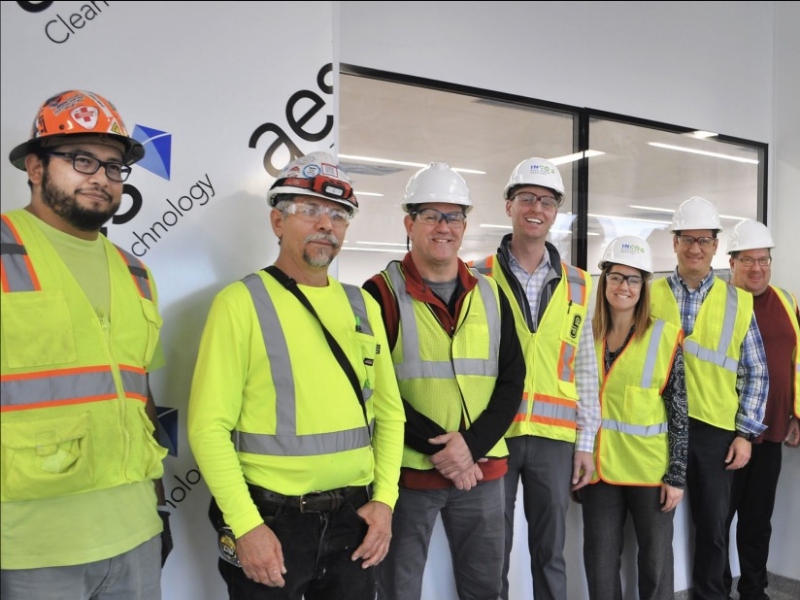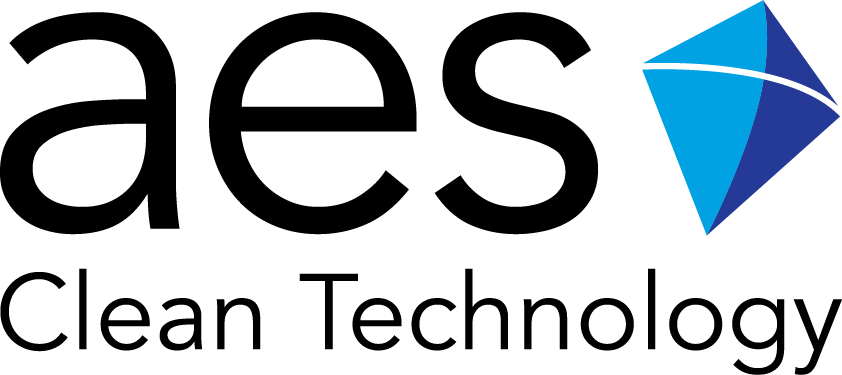We first sat down with AES Clean Technology’s Grant Merrill in 2019. The Chief Commercial Officer heads up the cleanroom design and build firm in the US, highly focused on building a comprehensive modular component range.
As the business has continued to grow, Merrill has focused on the client-facing side of it. In his role today, he works closely with the company’s commercial team to develop projects and set the company up for success.
A laser focus on speed-to-market
Speaking in 2019 before the pandemic, Merrill explained that, even then, the company was laser-focused on speed-to-market for its cleanroom clients. This was already a pressing need before COVID-19, but in its wake, became acute.
“The pandemic has fundamentally changed the expectations for speed of response and our team has risen to this challenge despite supply chain uncertainty,” Merrill says. “The current largest speed-to-market battle on most projects is ensuring availability of both material and labour.”
We leverage as many in-house capabilities as possible so that we can remain in control of the supply chain
- Grant Merrill, AES Clean Technology's CEO
He explains that the component suppliers that are key within the cleanroom market have worked hard to bring lead times back down since the pandemic, but extended cycles remain a challenge for certain products such as HVAC equipment, electrical gear and microelectronic components.
Labour availability, on the other hand, is a regional issue, due to the strong standing of the construction sector in the current US climate.
Merrill’s answer to both? Taking more and more in-house!
“We leverage as many in-house capabilities as possible so that we can remain in control of the supply chain,” he says. “Examples include the self-performance of our modular systems manufacturing and the self-performance of our cleanroom installations, which we control with our own personnel.”
This was one of the driving forces behind one of Merrill’s latest launches for the company; the OMNI electrical utility raceway. A raceway is an enclosed conduit that forms a physical pathway for electrical wiring. Raceways protect wires and cables from heat, humidity, corrosion, water intrusion and general physical threats. So all in all, an extremely important and necessary part of a cleanroom build.
“Our clients need our facility execution strategy to provide certainty of cost, schedule, quality and longevity – in an uncertain world,” Merrill explains. “The OMNI electrical utility raceway is a detail that was historically performed by multiple trades on the project site to locate an electrical use point on a wall. This required multiple shifts of time and intermediate inspection steps by a code official. With the OMNI system, we leverage our factory-produced modular wall system and populate the UL-listed electrical raceways with electrical components and wiring in the factory. They are then fully assembled and tested before shipment so that the project site receives a completed system that simply plugs into the project.”
Creating control and certainty to an aspect of a project timeline, and addressing an actual problem experienced by many clients, is just one of the ways to reduce speed-to-market that Merrill is taking advantage of.
Control and certainty are some of the big attractions of modular concepts, and vertical integration goes hand in hand with it, striving for these same qualities. AES’ turnkey solution, Faciliflex, which is what started the business 36 years ago, has been continually improved over the years with vertical integration in mind. “By integrating the modular cleanroom architecture with high-performance HVAC systems, we are able to turn over a cleanroom asset that ensures environmental performance as well as regulatory compliance in a single-source solution,” Merrill says.
Supplying the supplier
Taking control of more aspects of a project as a supplier of services is all well and good, but what happens when the supplier’s supply chain is challenged?
This was an issue faced by so many in the cleanroom sector over the last few years, as the pandemic wreaked havoc on global trade.
Merrill likewise said that the instability had been a “significant challenge” for AES, explaining that they were challenged to source materials for their manufacturing environment and for project sites. “A lot of the obstacles were due to shipping delays, availability of containers used to ship materials, or logistics challenges for transporting products from one location to another.”
“Our ability to rely upon our supply base for procurement of critical systems and materials was strained at times. Raw materials, shipping logistics and even the shipping containers themselves were no longer a guaranteed commodity, and that was something we had to consider and overcome.”
We worked closely with supply partners to develop safety stocks and standardised solutions
In response to all those pressures, Merrill says they worked closely with supply partners to develop safety stocks and standardised solutions, and to source alternate suppliers so they could adhere to project schedules. “This helped us reassure our clients that we could maintain supply consistency.”
Working during a pandemic
“We viewed the pandemic through the lens of the following phases: preparation, learning, tweaking and back to the basics,” Merrill says. “Ultimately, no matter how hard we prepared, we could not have predicted how the world would change during the pandemic years.”
It was an unpredictable time for sure, with Merrill explaining that some of their clients had their programmes paused due to clinical trial holds, while others needed them to speed up for a pandemic response project.
“We were privileged to create multiple facilities for one of the world’s largest contract manufacturers who was committed to the US government through Operation Warp Speed to produce millions of doses of the COVID-19 vaccine on behalf of two global biopharma companies,” Merrill says proudly.
He recounts the “extreme pressure” this accelerated completion took on the business, working closely with the client and its filling line manufacturer to design, build and commission a modular cleanroom facility to house the high-speed manufacturing operation. But the outcome was well worth it, seeing the vaccine distribute to the world.
Work from home was a completely new concept to the team, but this too followed the phases Merrill set out earlier, learning and tweaking along the way. Quickly assessing who needed to be on-site, and who didn’t, the company quickly instituted cloud-based tools in the original outbreak. “We are a people-first business that thrives on personal contact with each other and with our clients so, ultimately, we transitioned back to in-person activities wherever possible, in a hybrid environment.”
Merrill makes sure to emphasise the value of his team in this whole endeavour, saying: “I consider the growth of our team my biggest success. Their technical and personal achievements through an incredibly difficult business landscape over the last three years has been remarkable. While focusing on the health and safety of their own families, our team never lost sight of our company’s mission.”
“And so, we came out of the pandemic more prepared for business disruptions that may descend upon us in the future.”
The elephant in the room: sustainability
There is no one way to make a cleanroom sustainable, but you can make a solution sustainable in many ways.
Merrill is aiming to do this within the concept of modularity.
His reasoning and direction with this is the lifecycle angle. Modular architectural technology can be “reused, repurposed and relocated” instead of ending up in a landfill, he explains. Recycling is also a huge part of the modular process on both the manufacture and disposal ends.

The AES Clean Technology team
Powering a cleanroom is indisputably the main environmental impact of sectors in need of cleanroom environments. Merrill acknowledges that he must balance the goal of reducing consumption with protecting manufactured products, especially those produced in an aseptic environment. “That is where the fine balance comes into play,” he says.
Describing regulated manufacturing as an understandable risk-averse world, Merrill talks about the best targets for reducing environmental impacts. “[This is] best targeted on the “wet side” of the HVAC infrastructure where heat recovery strategies can be employed to reduce energy consumption without negatively impacting pressure cascade in the cleanrooms; a paramount requirement for product protection. In addition, high-performance makeup air systems can leverage the exchange of energy between outgoing exhaust airstreams and incoming outside airstreams in both harsh winter and summer conditions, effectively reducing the capacity – and therefore energy consumption – of the plant utilities.”
Discussing the topic of dynamic air control with variable air change rates as one way to improve sustainability, Merrill seems cautious but optimistic. Calling the solution both “elegant” and “complex”, he says that though it has not yet been brought to the mainstream, it is only a matter of time.
“[Variable air change rates] rely on real-time monitoring of particle counts and the ability of the automation system to make minute-by-minute changes to airflows within the space in response to performance. This is a very complex process requiring hardware and software that goes beyond the traditional HVAC installations,” he says. In the “risk-averse world” Merrill describes, the cation is understandable, but the potential is there.
The future: projects and trends
Asking Merrill about one future trend, and one project, that he is excited about, reveals how he is trying to make sure the company’s product is future-proofed to help address as many upcoming needs of the industry.
Future trend: The biotech trend is still showing strong demand in 2023, and technologies like ATMPs are at the forefront of Merrill’s planning for the future. But these therapies are not just like any other pharmaceutical to manufacture.
From the standpoint of manufacturing process steps and personnel involvement, ATMPs are quite intense, and it all stems from their personalised nature. This nature invokes a lot of issues when it comes to bulk manufacturing.
“In bulk manufacturing, scaling up the process can help solve capacity issues by increasing the capacity of bulk processing and throughput. For personalised treatments in the form of ATMP, facilities need to scale out to gain more capacity,” Merrill says. “As such, the ATMP facilities should be planned for templated expansions, either by accommodating future expansion space within the original site or duplicating the same capacity in another site.”
He makes clear that by leveraging the use of repeatable results and clean construction from modular technology, with templated design concepts, ATMP production can be scaled out with additional capacity while the existing facility remains in operation.
ATMP facilities should be planned for templated expansions
Future project: “In 2019, we were chosen as the cleanroom partner to a startup CDMO business to create their first aseptic manufacturing facility,” Merrill enthuses. “We knew the principals of the business from working together previously and we were certain that their venture would be a tremendous success.”
Merrill goes on to say that since the completion of the original project, the business has secured clinical and commercial clients, driving the need to expand the facility.
During the conceptual design phase of the original project, known as Compass (trademarked) cleanroom programming, Merrill direction-set the project by planning for this eventual success and designed the facility to enable future expansion.
“We are now realising that dream of expanding the cleanroom and installing a second filling line while keeping the existing cleanroom facility fully functional in its qualified state, merely two inches away. Our modular cleanroom solution with clean installation techniques will ensure that the original facility remains on-mission to manufacture products while we add capacity to the overall operation and then connect the two phases over a brief weekend shutdown.”

